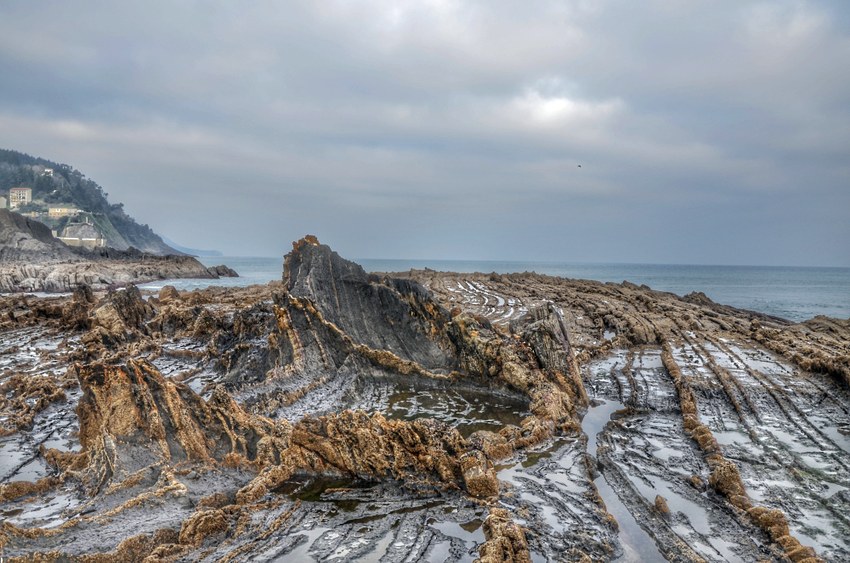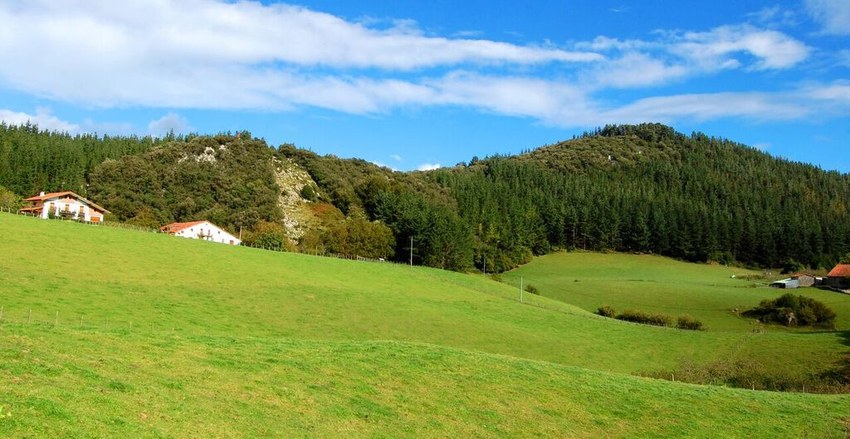Natural Environment
This environment is also known for its great geological significance, since most of its coastline is formed by flysch and much of its environment portrays a very characteristic geological morphology known as karst.
The Flysch Landscape
The steep west coast of Gipuzkoa has a magnificent geological treasure. Millions of years of geological history are aligned in a long sequence of rock strata called flysch.
Karst
Mutriku offers various wonderful locations for naturalists, such as the Astigarrabia Valley, or the localities of Laranga and Galdonamendi. However, the more interesting points are undoubtedly Monte Arno and its surroundings and the Olatz Valley.o.

The flysch of Mutriku is known as Black Flysch, created more than 110 million years ago. It is one of the few places in the world where giant ammonites can be found. In fact, one of the most important fossils collections in the world has been gathered from here. This collection that can be visited at the Nautilus Geological Interpretation Centre of Mutriku.
This coastline has become a reference point for Basque palaeontology and geology. In fact, Mutriku is part of the Geopark along the Basque Coast, offering the possibility of unveiling all the secrets of the Mutriku coast while participating on its guided tours.
Find out more: www.geoparkea.com
The Karst Landscape
Mutriku offers various wonderful locations for naturalists, such as the Astigarrabia Valley, or the localities of Laranga and Galdonamendi. However, the more interesting points are undoubtedly Monte Arno and its surroundings and the Olatz Valley.
The Arno Mountain Range:
Arno is a calcareous mountain range with breathtaking landscapes. So much so that it has been listed on the European Natura 2000, and in 2013 it was declared a special area of conservation (KBG/ZEC).
Above all else, it was given this status due to the flora of the area and, more specifically, to the holm oak trees (Quercus Ilex) that are found across these mountains, being one of the most important holm oak forests in the north of the Iberian Peninsula.
The Olatz Valley



